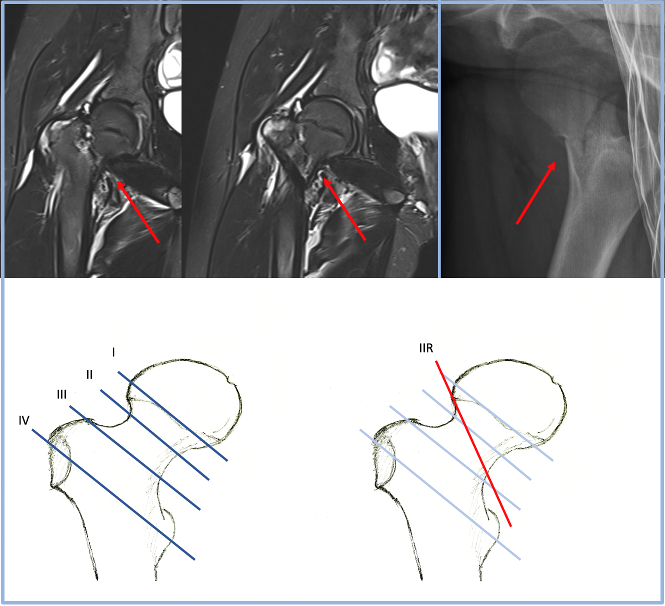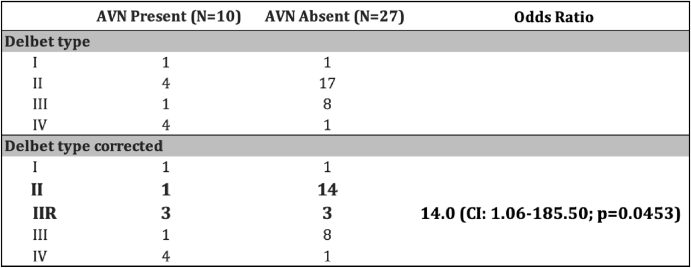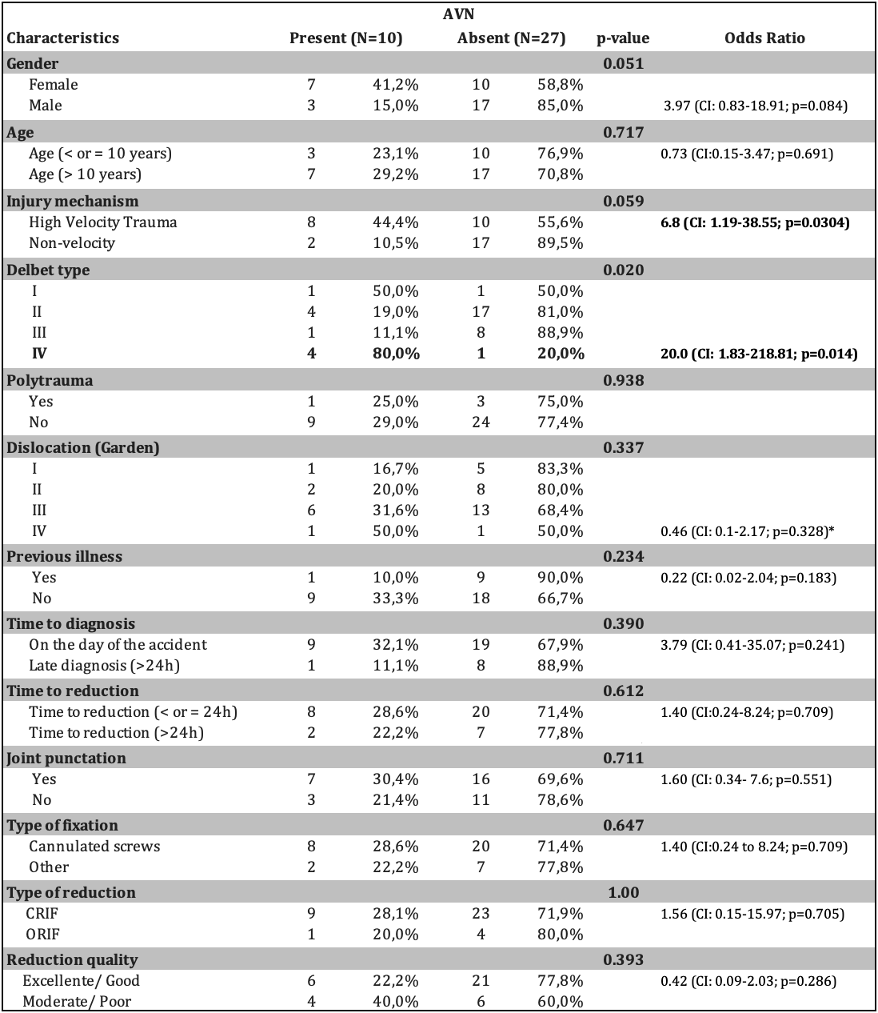German Congress of Orthopaedics and Traumatology (DKOU 2025)
Deutscher Kongress für Orthopädie und Unfallchirurgie 2025 (DKOU 2025)
Risk factors of avascular femoral head necrosis after a pediatric femoral neck fracture: A new high risk fracture type + a 15-year follow up
Text
Objectives: Pediatric femoral neck fractures (PFNF) are rare but associated with a high rate of serious complications such as avascular femoral head necrosis (AVN).
Major risk factors and prognostic tools for an AVN are still unclear. As AVN is a devastating complication, this study aims to evaluate the predictors for AVN.
Material and methods: All patients that suffered a PFNF or an AVN following a PFNF in the last 15 years with a minimum of 12 months follow-up were included in this retrospective study. association of possible risk factors such as age, gender, traumatic mechanism, fracture type, degree of dislocation, time to surgery or type of surgical intervention with AVN was analyzed. Since not all fractures could be assigned to an exact fracture type, a new fracture type was included in the subgroup analyses.
Results: We included 37 patients in the study population. The mean age at the time of the diagnosis was 11.5 years (ranging 5–16 years). Mean follow-up was 30 months. 75% of the cases were diagnosed on the day of the trauma. A previous illness was significantly associated with a late diagnosis (p<.001). 17 patients suffered a high velocity trauma.
35 patients were treated operatively, the majority with a closed reduction (81%) and an internal fixation with cannulated screws (75%). In 24 patients (65%) an additional puncture of the hip joint was performed.
Ten patients developed AVN. A Delbet type IV injury and a high velocity trauma were significantly associated with an AVN (p=0.020, p=0.030 respectively). A type IIR fracture was significantly more likely to develop AVN compared to a Delbet type II fracture.
Discussion and conclusions: High velocity trauma is a significant risk factor for developing AVN. In contrast to literature, a Delbet type IV fracture was significantly associated with AVN.
A type IIR fracture has a higher possibility to develop AVN than a normal Delbet type II fracture.
As the incidence of pediatric femoral neck fractures is low, the size of a study population is limited. Nevertheless, AVN is still a life altering complication leading to additional surgical treatments, hospital stays and impairment of daily life activities.
Figure 1 [Abb. 1]
Figure 1: Examples of two type IIR fractures; Delbet-Colonna classification and demonstration of new fracture type
Table 1 [Tab. 1]
Table 2 [Tab. 2]
Tabelle 2: AVN risk in the new Delbet subgroup type IIR (R=Risk)





